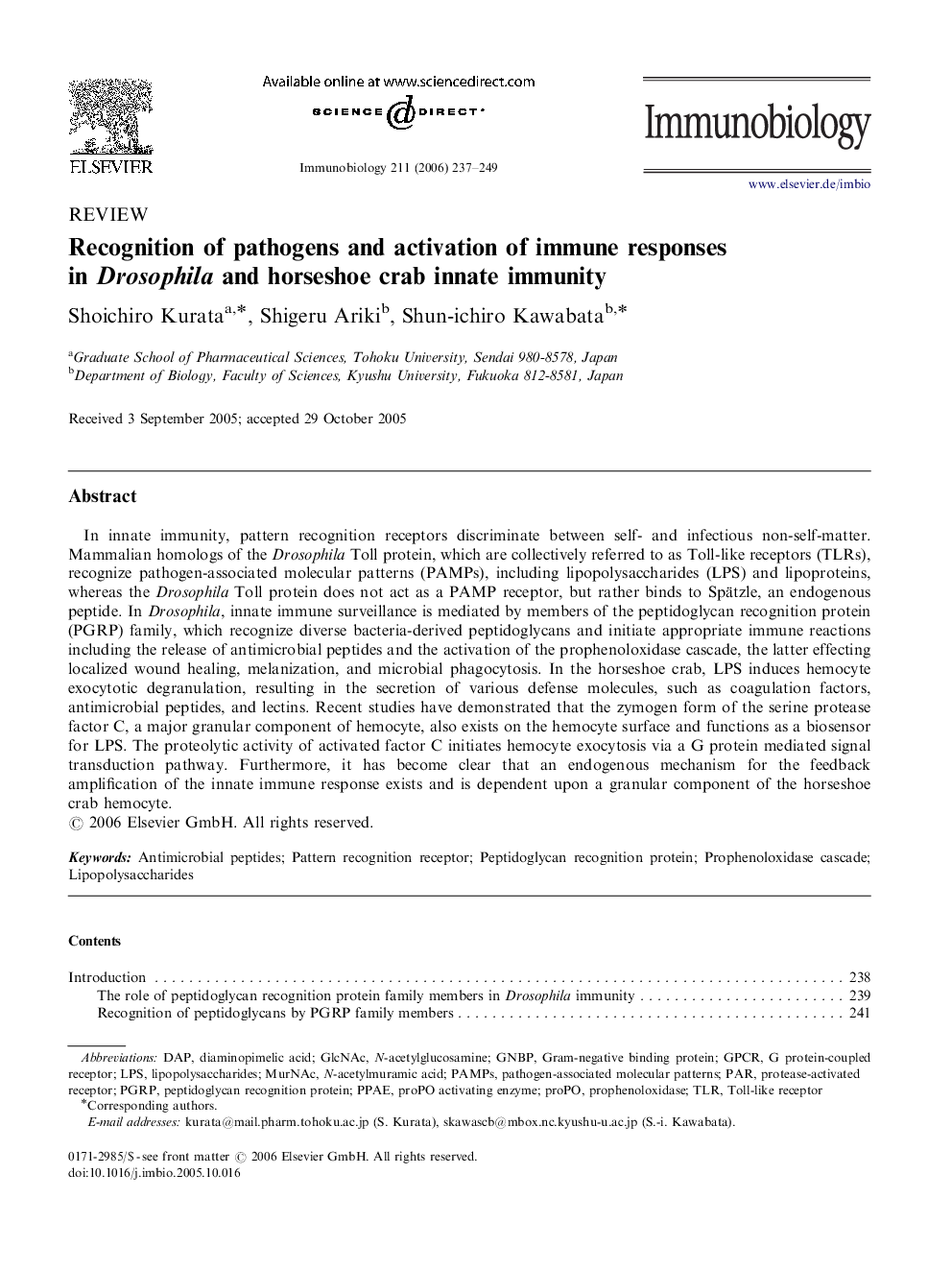| Article ID | Journal | Published Year | Pages | File Type |
|---|---|---|---|---|
| 2183828 | Immunobiology | 2006 | 13 Pages |
Abstract
In innate immunity, pattern recognition receptors discriminate between self- and infectious non-self-matter. Mammalian homologs of the Drosophila Toll protein, which are collectively referred to as Toll-like receptors (TLRs), recognize pathogen-associated molecular patterns (PAMPs), including lipopolysaccharides (LPS) and lipoproteins, whereas the Drosophila Toll protein does not act as a PAMP receptor, but rather binds to Spätzle, an endogenous peptide. In Drosophila, innate immune surveillance is mediated by members of the peptidoglycan recognition protein (PGRP) family, which recognize diverse bacteria-derived peptidoglycans and initiate appropriate immune reactions including the release of antimicrobial peptides and the activation of the prophenoloxidase cascade, the latter effecting localized wound healing, melanization, and microbial phagocytosis. In the horseshoe crab, LPS induces hemocyte exocytotic degranulation, resulting in the secretion of various defense molecules, such as coagulation factors, antimicrobial peptides, and lectins. Recent studies have demonstrated that the zymogen form of the serine protease factor C, a major granular component of hemocyte, also exists on the hemocyte surface and functions as a biosensor for LPS. The proteolytic activity of activated factor C initiates hemocyte exocytosis via a G protein mediated signal transduction pathway. Furthermore, it has become clear that an endogenous mechanism for the feedback amplification of the innate immune response exists and is dependent upon a granular component of the horseshoe crab hemocyte.
Related Topics
Life Sciences
Biochemistry, Genetics and Molecular Biology
Cell Biology
Authors
Shoichiro Kurata, Shigeru Ariki, Shun-ichiro Kawabata,
